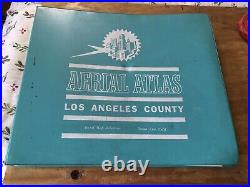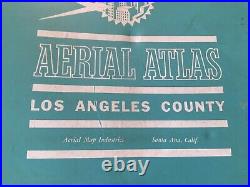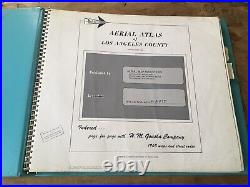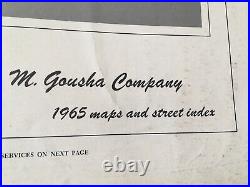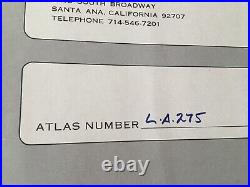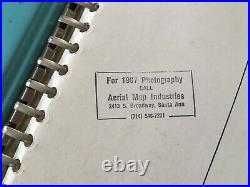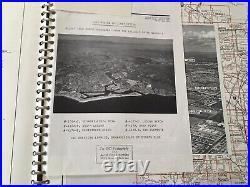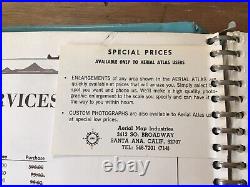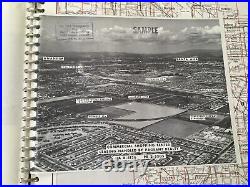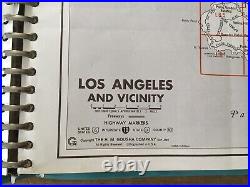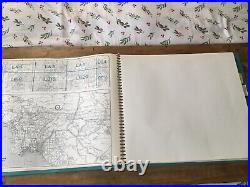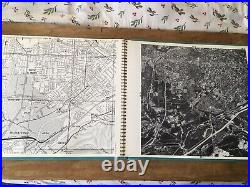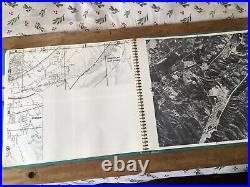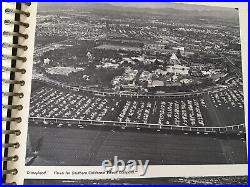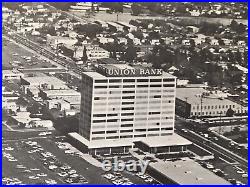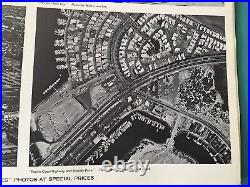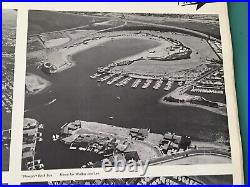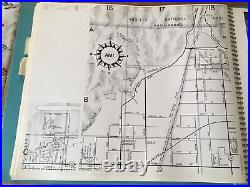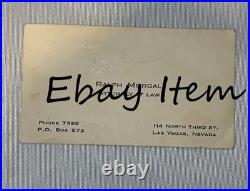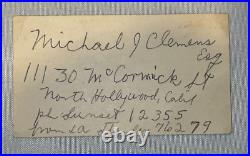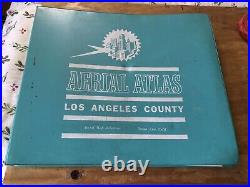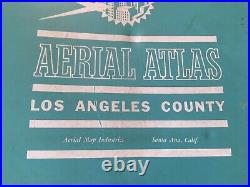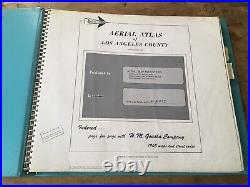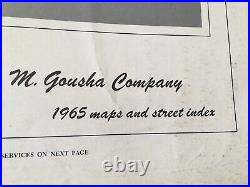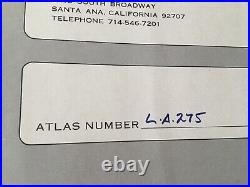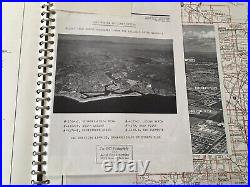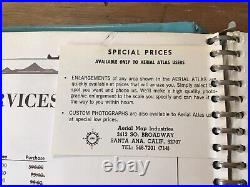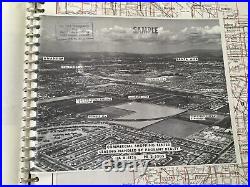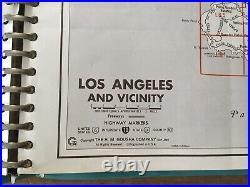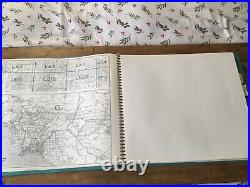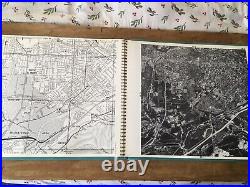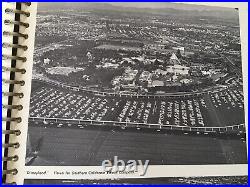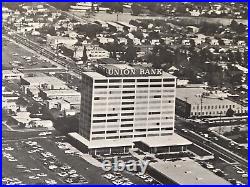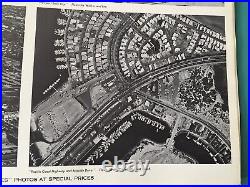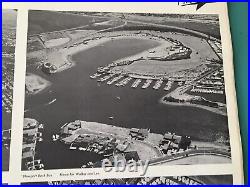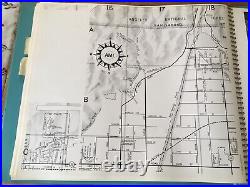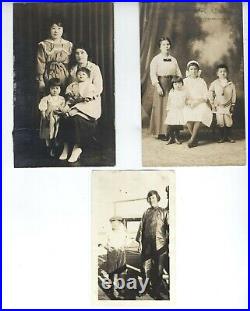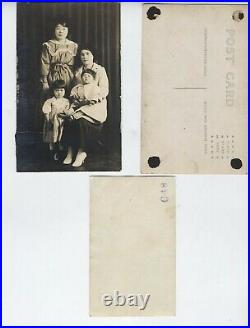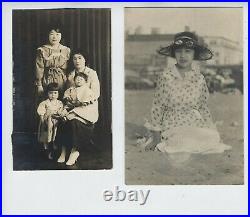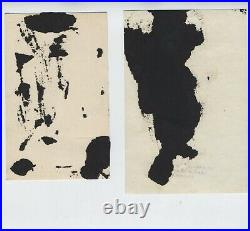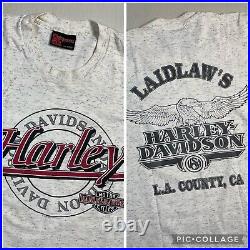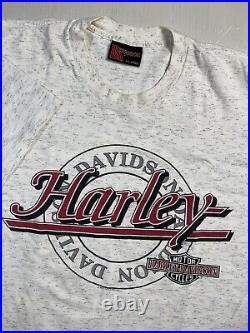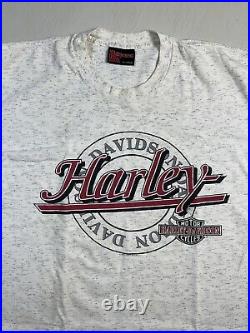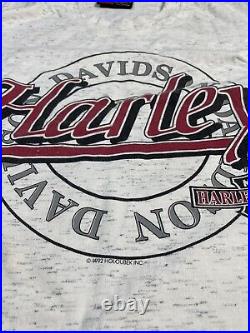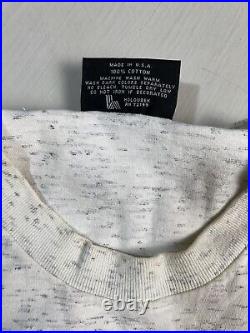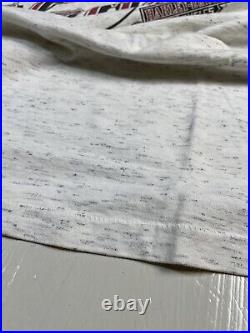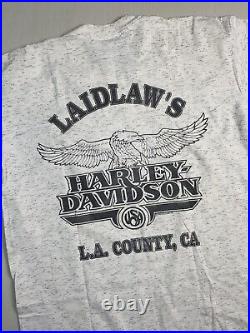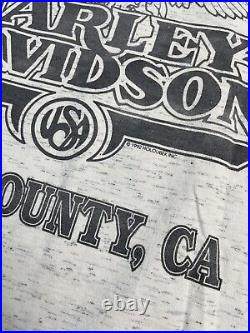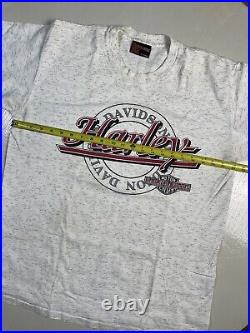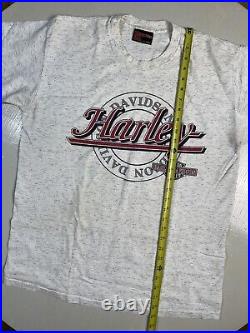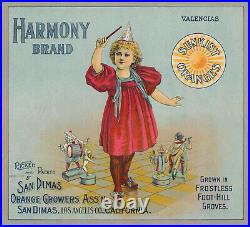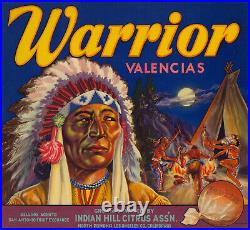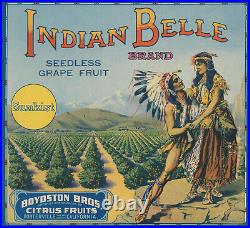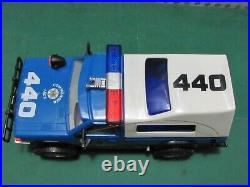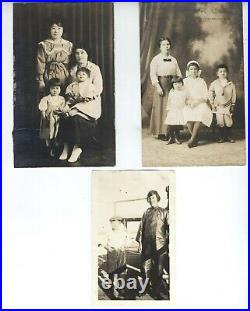
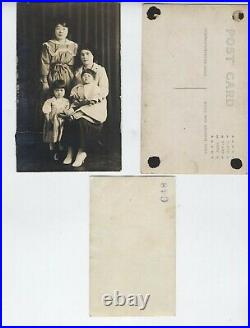
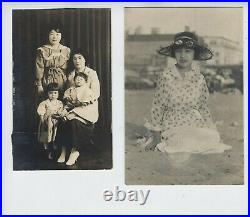
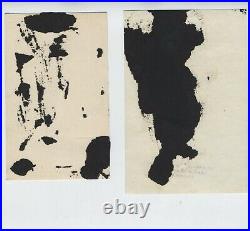

2 RPPC AND 2 PHOTOS MEASURING APPROXIMATELY 4X6 INCHES AND 2 3/4 X 4 3/8 INCHES. LARGER PHOTO HAS LOS ANGELES STAMP ON BACK. ONE RPPC ON FRONT HAS PENCIL WRITING T. ONE RPPC IS TORN NEAR THE YOUNG GIRL MIDDLE LEFT. There is a Japanese American and a Japanese national population in Los Angeles and Greater Los Angeles. Los Angeles has become a hub for people of Japanese descent for generations in areas like Little Tokyo and Boyle Heights. As of 2017, Los Angeles has a Japanese and Japanese American population was around 110,000 people. This section needs expansion. You can help by adding to it. After the Chinese Exclusion Act of 1882, Japanese immigration to the United States increased drastically throughout the 1800s. By 1910, Los Angeles had the highest percentage of Japanese and Japanese descendants in the country. Japanese immigrants took on the low-wage jobs that were once held by Chinese Immigrants and settled in cities like San Francisco. Japanese immigrants were once recruited to come to the United States to take on jobs on railroads but quickly turned to agriculture as a means of work in Southern California. In 1905, the Los Angeles Herald-Examiner published an article on the “yellow peril” and related it to Japanese immigrants, as its original creation was against people of Chinese descent. [3] The first group traveled from San Francisco after experiencing anti-Asian sentiment in that city. [4] The early 1900s saw an increase of racism and xenophobia in California to the point where Asian children were being segregated in public schools in San Francisco. [3] After the 1906 earthquake in Northern California, around 2,000-3,000 Japanese immigrants moved to Los Angeles and created areas like Little Tokyo on East Alameda. [3] As the community continued to grow, Little Tokyo extended to the First Street Corridor in Boyle Heights, in the early 1910s. Boyle Heights was Los Angeles’s largest residential communities of Japanese immigrants and Americans, apart from Little Tokyo. In the early 1910s, Boyle Heights was one of the only communities that did not have restricted housing covenants that discriminated against Japanese and other people of color. [5] Boyle Heights was a bustling interracial community where people of different ethnic backgrounds lived amongst each other. In the 1920s and 1930s, Boyle Heights became the center of significant churches, temples, and schools for the Japanese community, These include the Tenrikyo Junior Church of America at 2727 E. 1st Street (1937-39), the Konko Church at 2924 E. 1st Street (1937-38), and the Higashi Honganji Buddhist Temple (1926-27), all designed by Yos Hirose, and the Japanese Baptist Church at 2923 E. 2nd Street (1926; extant but altered) built by the Los Angeles City Baptist Missionary Society in 1926-29. [3] A hospital, also designed by Hirose, opened in 1929 to serve the Japanese American community. Families of Japanese ancestry being removed from Los Angeles, California during World War II. Wikimedia Commons has media related to Japanese American internment processing in Los Angeles. As of December 1941 there were 37,000 ethnic Japanese people in Los Angeles County. Not long after the attack on Pearl Harbor, President Roosevelt issued Executive Order 9066, which authorized military commanders to exclude “any or all persons” from certain areas in the name of national defense, the Western Defense Command began ordering Japanese Americans living on the West Coast to present themselves for “evacuation” from the newly created military zones. This included many Los Angeles families. After the war, due to lack of housing in Little Tokyo, many Japanese Americans returning from the camps moved into neighborhoods surrounding the downtown area, into apartments and boarding houses. Notably, Boyle Heights, just east of Little Tokyo, had a large Japanese American population in the 1950s (as it had before the internment) until the arrival of Mexican and Latino immigrants replaced most of them. In 1981, public hearings were held by the Commission on Wartime Relocation and Internment of Civilians at the Los Angeles State Building as part of a government investigation into the constitutionality of the World War II internment of Japanese Americans. More than 150 people participated in the Los Angeles hearings. Exterior of Holiday Bowl, designed by architect Helen Liu Fong, in 2002. Little Tokyo in Downtown Los Angeles is the main historical Japantown of Los Angeles. Sawtelle housed a Japantown that became known as “Little Osaka”. Jack Fujimoto, author of Sawtelle: West Los Angeles’s Japantown, wrote that the name was given because of the many colorful eateries and shops. “[8] The city put up community signs “Sawtelle Japantown for this area on April 1, 2015. [9] After court ruling that the segregation covenants in the Crenshaw district were unconstitutional, the area opened up to other races. A large Japanese American settlement ensued, which can still be found along Coliseum Street, east and west of Crenshaw Boulevard. [10] The Holiday Bowl was built by Japanese entrepreneurs as a combination bowling alley, pool hall, bar and coffee shop in 1958 and served Crenshaw’s Japanese residents who “had not long before suffered Manzanar’s internment camps and a blanket racial ban by the American Bowling Congress”. [11] Blacks started arriving in the 1960s, and by the 1970s were the majority. The interior of the Mitsuwa in Torrance. As of 2014 Torrance has the second largest concentration of ethnic Japanese people of any U. The city has headquarters of Japanese automakers and offices of other Japanese companies. [12] Because of this many Japanese restaurants and other Japanese cultural offerings are in the city, and Willy Blackmore of L. Weekly wrote that Torrance was “essentially Japan’s 48th prefecture”. [13] A Mitsuwa supermarket, Japanese schools, and Japanese banks serve the community. In the pre-World War II period the South Bay region was one of the few areas that allowed non-U. Citizens to acquire property, so a Japanese presence came. According to John Kaji, a Torrance resident quoted in Public Radio International who was the son of Toyota’s first American-based accountant, the Japanese corporate presence in Torrance, beginning with Toyota, attracted many ethnic Japanese. Toyota moved its operations to its Torrance campus in 1982 because of its proximity to the Port of Long Beach and Los Angeles International Airport, and it was followed by many other Japanese companies. As of 1988 Gardena also has a large Japanese-American community. [14] Early in Gardena’s history, Japanese migrants played a role in the agrarian economy. Jack Rodman, a managing partner of the accounting firm Kenneth Leventhal & Co. Stated in 1989 that the most preferred place for Japanese businesspeople to settle is the Palos Verdes Peninsula, citing the inexpensiveness compared to Bel Air, Brentwood, and Pacific Palisades, proximity to the ocean, and the ranch-style houses because they are more like a Japanese home–single-story, spread out. [16] He stated that the other preferred places were Pasadena, San Marino, and Arcadia. [16] In addition Rodman said some Japanese businesspeople liked to settle in Hancock Park in the City of Los Angeles; Hancock Park is in proximity to the Consulate-General of Japan in Los Angeles. As of 2010, according to the report “A Community Of Contrasts: Asian Americans, Native Hawaiians and Pacific Islanders in Los Angeles County” by the nonprofit group Asian Americans Advancing Justice – Los Angeles (formerly the Asian Pacific American Legal Center), of the Asian ethnic groups, 70% of Japanese Americans were born in the U. The highest such rate of the Asian ethnic groups. In 1986 Hiroshi Matsuoka, the Japan Business Association of Southern California (JBA, ??????? Minami Kariforunia Nikkei Kigyo Kyokai) executive director, stated that there were about 3,500 Japanese nationals working for 530 branch companies of Japanese companies in the Los Angeles metropolitan area. American Honda Motor Company headquarters in Torrance. The city of Torrance has headquarters of Japanese automakers and offices of other Japanese companies. [13] The headquarters of American Honda Motor Company, Honda’s North American division, is located in Torrance. [19] Toyota Motor Sales, U. Division of Toyota, has its headquarters in Torrance. [20] Toyota has plans in 2014 to move its headquarters to suburban Dallas, Texas in the next few years. [21] All Nippon Airways operates its United States headquarters, a customer relations and services office, in Torrance. [22] Also the Japanese supermarket chains Mitsuwa Marketplace[23] and Nijiya Market[24] are headquartered in Torrance. Former Toyota Motor Sales, U. Japan Airlines moved its U. Headquarters to El Segundo in 2003. [25] Nissan previously had its North American headquarters in Carson. In the summer of 2006 the Nissan headquarters moved to Tennessee. As of 1987, the membership list of the Japanese Business Association of Southern California stated that in an area between Los Angeles International Airport and the Port of Los Angeles, there were 194 Japanese companies which had branch operations. [19] In 1989, Sadao “Bill” Kita, the executive director of the JBA, stated that there were 693 Japanese companies with offices in Southern California. In a period before 1994, the peak number of Japanese expatriate executives and managers in Southern California was 3,800. In 1994, according to Kita, the number declined to 615. The number of expatriate managers and executives, by that year, had declined to 3,400. At that point, Japan was experiencing an economic recession. In 1979 there were two full-time and part-time schools in Greater Los Angeles catering to Japanese national students. They had a total of 356 students. In the 1980s the increase in Japanese businesses resulted in an increase in enrollment in full-time and part-time schools catering to Japanese national students. In 1987, there were three school campuses with 4,430 students. The campuses were located in Gardena, Hermosa Beach, and Torrance. As of 1989, the Torrance Unified School District and the Palos Verdes Peninsula Unified School District had 42% of all Japanese-speaking students enrolled by the 100 school districts in Los Angeles County. The Palos Verdes district had 346 students born in Japan in 1985, while the number increased to 434 in 1988. The Nishiyamato Academy of California is located in Lomita. [28] The school opened in April 1992. It was founded by Ryotaro Tanose, a Japanese Diet member, as a branch of the Nishiyamato Gakuen Junior and Senior High School (Nishiyamato Academy) in Kawai, Nara Prefecture. It was originally located in the former Dapplegray School building in Rolling Hills Estates. In 1993 the school served grades 6 through 8 and had 38 students. In 1994 it served grades 5 through 9 and had 71 students. There was previously another full-time Japanese school, the International Bilingual School, founded to educate children of Japanese nationals working for companies such as Honda and Toyota. [29] The school opened in Torrance in 1979, later moved to Hermosa Beach, before moving to a Palos Verdes school district facility in Palos Verdes Estates in 1992. [27] By 2002 the school district had filed suit to force the International Bilingual School to leave the school property. Asahi Gakuen (??? “School of the Rising Sun”) is a part-time Japanese school in the Los Angeles area. [19][31] The school was founded by the Association for the Promotion of Japanese Language Education in Los Angeles. In 1988, the school had 2,500 students. [32] The school teaches the Japanese language, science, social sciences, and mathematics. [32] As of 1987 the school teaches all four aspects in each school day. [19] The Japan Traders’ Club of Los Angeles (Nihon Boeki Konwa-kai), as of 1997, financially supports the school. The main campus of the East-West Japanese School (San’iku Tozai Gakuen) is located in Gardena, adjacent to the Gardena Seventh-day Adventist Church and across from the Gardena Civic Center. [19] It also has branch campuses: the Rolling Hills Campus (???????? Roringuhiruzu Ko) in Rolling Hills Estates and the Irvine/Costa Mesa Campus (????? /????? Abain/Kosutamesa Ko) in Costa Mesa. [33] Its primary customer base consists of Japanese children who are enrolled in American schools. As of 1987 most of its students are from Buddhist families. The school offers two hour classes on weeknights. As of 1987 the Southern California Conference of Seventh-day Adventists does outreach to the Japanese community by sponsoring the East-West School. That year, the principal, Akira Nakamura, stated that students do 10-minute bible studies as part of the program even though most students are not Christian. Nishiyamato Academy offers its own Saturday school program. The Japanese Language School Unified System, founded in 1949, included a main campus in Los Angeles and a branch campus in Sun Valley as of 1988. The San Fernando Valley Japanese Language Institute in Arleta was founded circa 1928. The Rafu Chuo Gakuen is a part time Japanese language school that is located Saratoga Street in Boyle Heights. Founded in February 1929, under the name Tokiwa Gakuen but later moved that same year and was renamed Boyle Heights Chuo Gakuen. [36] By 1932, Boyle Heights Chuo Gakuen, to its present-day location in Boyle Heights and assumed the name Rafu Chuo Gakuen. Rafu Chuo Gakuen has served as a cultural and language center for children of all ages in the Japanese community. [36] It is part of the Kyodo System of schools that focuses on fluency, cultural understanding, and history for children in elementary through high school. Japanese American National Museum in Little Tokyo. The Japanese American National Museum and the Japanese American Cultural and Community Center (JACCC) are located in Little Tokyo. The community center features the George J. Doizaki Gallery, the 880-seat Aratani/Japan America Theatre, the JACCC Plaza (designed by Isamu Noguchi), and the James Irvine Japanese Garden. The Japanese American Veterans Memorial Court was erected on the San Pedro Street side of the community center building to honor the Japanese Americans who died in service. Additionally, the Go For Broke Monument, which commemorates Japanese Americans who served in the United States Army during World War II is located on the north side of Little Tokyo, behind the museum. The Union Center for the Arts (former Japanese Union Church of Los Angeles) is located on Judge John Aiso Street. The Nisei Week festival is held early in August every year and is sponsored by various Little Tokyo businesses. Similar Japanese American Community Centers to the one in Little Tokyo were founded after the trauma of the internment of Japanese Americans. Because of the Japanese business presence, many Japanese restaurants and other Japanese cultural offerings are in Torrance, and Willy Blackmore of L. The OC Japan Fair takes place in Orange County. John Naka with his masterpiece Goshin at the United States National Arboretum. Brittany Ishibashi (born 1980), actress (Orange County)[40]. Lance Ito (born 1950), judge. Kyle Nakazawa (born 1988), soccer player. Thomas Noguchi (born 1927), medical examiner-coroner. Yuji Okumoto (born 1959), actor. Jolene Purdy (born 1983), actress (half-Japanese[41]) – From Torrance[42]. Miiko Taka (born 1925), actress. George Takei (born 1937), actor. Tamlyn Tomita (born 1966), actress. He Japanese American National Museum (, Zenbei Nikkeijin Hakubutsukan) is located in Los Angeles, California, and dedicated to preserving the history and culture of Japanese Americans. Founded in 1992, it is located in the Little Tokyo area near downtown. The museum is an affiliate within the Smithsonian Affiliations program. The museum covers more than 130 years of Japanese-American history, dating to the first Issei generation of immigrants. Its moving image archive contains over 100,000 feet (30,000 m) of 16 mm and 8 mm home movies made by and about Japanese Americans from the 1920s to the 1950s. It also contains artifacts, textiles, art, photographs, and oral histories of Japanese Americans. The Japanese American National Museum of Los Angeles and the Academy Film Archive collaborate to care for and provide access to home movies that document the Japanese-American experience. Established in 1992, the JANM Collection at the Academy Film Archive currently contains over 250 home movies and continues to grow. Activist Bruce Kaji and other notable Japanese-American individuals conceived of the idea of the museum. The community had become organized around gaining recognition of the injustice they had suffered from the federal government during World War II. The museum was conceived as a way to preserve the positive aspects of their full history and culture in the United States. When it first opened in 1992, the museum was housed in the 1925 historic Hompa Hongwanji Buddhist Temple building. Irene Hirano served as its first executive director and later as president and CEO of the museum. [3] In January 1999, the National Museum opened its current 85,000-square-foot (7,900 m2) Pavilion, designed under the supervision of architect Gyo Obata, to the public. [4] The temple building was used by government officials in 1942 to process Japanese Americans for wartime confinement. It is now used for offices and storage. In 1993 the museum was given hundreds of artifacts and letters from children in internment camps, which they had sent to San Diego librarian Clara Breed. The material was featured in an exhibit, “Dear Miss Breed”:Letters from Camp. It is now part of the museum’s permanent collection. In 1997, the Frank H. Watase Media Arts Center was established by Robert A. Nakamura and Karen L. Ishizuka, to develop new ways to document, preserve and make known the experience of Americans of Japanese ancestry. In 1999, the Manabi and Sumi Hirasaki National Resource Center (HNRC) was established to provide access to the museum’s information and resources, both at the facility and online. It documents the life and culture of the Japanese Americans. Akemi Kikumura Yano, author, [6] was the museum’s first curator. She succeeded Irene Hirano as President and CEO from 2008 until 2011. During her tenure, on December 2010, the museum was awarded the National Medal for Museum and Library Service. Greg Kimura, an Episcopal priest, was appointed the president and CEO of the museum, serving between 2012 and 2016. [8][9][10] During his time the museum experienced an economic downturn as he looked to promote untraditional exhibits and let go core staff members. He resigned in May 2016 to pursue other work opportunities. In 2016, Ann Burroughs was announced to replace him as the new interim CEO[12] and was officially selected shortly thereafter. Actor George Takei serves as a member of the museum’s board of trustees. He represented it as his charity during his time on The Celebrity Apprentice and during his appearance on The Newlywed Game. Ambox current red Asia Australia. This section’s factual accuracy may be compromised due to out-of-date information. Please update this article to reflect recent events or newly available information. The museum’s current longterm exhibition is Common Ground: The Heart of Community, covering 130 years of Japanese American history, from the Issei and early immigration into the United States, World War II incarceration, to the present. Exploring the Supercute World of Hello Kitty (October 11, 2014 – May 31, 2015)[16]. Dodgers: Brotherhood of the Game (March 29 – September 14, 2014)[17][18]. Perseverance: Japanese Tattoo Tradition in a Modern World (March 8 – September 14, 2014)[19]. Marvels & Monsters: Unmasking Asian Images in U. Folding Paper: The Infinite Possibilities of Origami (March 10 – August 26, 2012)[21]. Drawing the Line: Japanese American Art, Design & Activism in Post-War Los Angeles (October 15, 2011 – February 19, 2012)[22][23]. Year of the Rabbit: Stan Sakai’s Usagi Yojimbo (July 9 – October 30, 2011)[24]. No Victory Ever Stays Won: The ACLU’s 90 Years of Protecting Liberty (November 21 – December 11, 2010). Mixed: Portraits of Multiracial Kids by Kip Fulbeck (March 20 – October 17, 2010)[25]. 20 Years Ago Today: Supporting Visual Artists in L. (October 4, 2008 – January 11, 2009)[26]. Glorious Excess (Born): Paintings by Linkin Park’s Mike Shinoda (July 12 – August 3, 2008)[27]. Living Flowers: Ikebana and Contemporary Art (June 15 – September 7, 2008)[28]. Southern California Gardeners’ Federation: Fifty Years (October 25 – November 13, 2005)[29]. Boyle Heights: The Power of Place (September 8, 2002 – February 23, 2003)[30]. Wrestling the Grand Tradition (July 3 – November 30, 1997)[31]. Dear Miss Breed: Letters from Camp (January 14 – April 13, 1997)[32]. Japanese Americans (Japanese:???? , Hepburn: Nikkei Amerikajin) are Americans who are fully or partially of Japanese descent, especially those who identify with that ancestry and its cultural characteristics. Japanese Americans were among the three largest Asian American ethnic communities during the 20th century; but, according to the 2000 census, they have declined in number to constitute the sixth largest Asian American group at around 773,000, including those of partial ancestry. [4] Southern California has the largest Japanese American population in North America and the city of Gardena holds the densest Japanese American population in the 48 contiguous states. Schools for Japanese Americans and Japanese nationals. Risk for inherited diseases. Japanese Americans by state. Works about Japanese Americans. Main articles: Japanese-American history, Japanese-American life before World War II, and Japanese-American life after World War II. A street in Seattle’s Nihonmachi in 1909. People from Japan began migrating to the US in significant numbers following the political, cultural, and social changes stemming from the Meiji Restoration in 1868. The Japanese population in the United States grew from 148 in 1880 (mostly students) to 2,039 in 1890 and 24,326 by 1900. In 1907, the Gentlemen’s Agreement between the governments of Japan and the United States ended immigration of Japanese unskilled workers, but permitted the immigration of businessmen, students and spouses of Japanese immigrants already in the US. Prior to the Gentlemen’s Agreement, about seven out of eight ethnic Japanese in the continental United States were men. By 1924, the ratio had changed to approximately four women to every six men. [8] Japanese immigration to the U. Effectively ended when Congress passed the Immigration Act of 1924 which banned all but a token few Japanese people. The earlier Naturalization Act of 1790 restricted naturalized United States citizenship to free white persons, which excluded the Issei from citizenship. As a result, the Issei were unable to vote and faced additional restrictions such as the inability to own land under many state laws. Because no new immigrants from Japan were permitted after 1924, almost all pre-World War II Japanese Americans born after this time were born in the United States. This generation, the Nisei, became a distinct cohort from the Issei generation in terms of age, citizenship, and English-language ability, in addition to the usual generational differences. Institutional and interpersonal racism led many of the Nisei to marry other Nisei, resulting in a third distinct generation of Japanese Americans, the Sansei. Significant Japanese immigration did not occur again until the Immigration and Nationality Act of 1965 ended 40 years of bans against immigration from Japan and other countries. In recent years, immigration from Japan has been more like that from Europe. The numbers involve on average 5 to 10 thousand per year, and is similar to the amount of immigration to the US from Germany. This is in stark contrast to the rest of Asia, where family reunification is the primary impetus for immigration. Main articles: Internment of Japanese Americans and Japanese American redress and court cases. Families of Japanese ancestry being removed from Los Angeles during World War II. During World War II, an estimated 120,000 Japanese Americans and Japanese nationals or citizens residing on the West Coast of the United States were forcibly interned in ten different camps across the Western United States. The internment was based on the race or ancestry, rather than the activities of the interned. Families, including children, were interned together. Four decades later, the Civil Liberties Act of 1988 officially acknowledged the “fundamental violations of the basic civil liberties and constitutional rights” of the internment. [10] Many Japanese-Americans consider the term internment camp a euphemism and prefer to refer to the forced relocation of Japanese-Americans as imprisonment in concentration camps. [11] Webster’s New World Fourth College Edition defines a concentration camp: A prison camp in which political dissidents, members of minority ethnic groups, etc. The nomenclature for each of their generations who are citizens or long-term residents of countries other than Japan, used by Japanese Americans and other nationals of Japanese descent are explained here; they are formed by combining one of the Japanese numbers corresponding to the generation with the Japanese word for generation (sei). The Japanese American communities have themselves distinguished their members with terms like Issei, Nisei, and Sansei, which describe the first, second, and third generations of immigrants. The fourth generation is called Yonsei , and the fifth is called Gosei. The term Nikkei encompasses Japanese immigrants in all countries and of all generations. The generation of people born in Japan who later immigrated to another country. The kanreki , a pre-modern Japanese rite of passage to old age at 60, is now being celebrated by increasing numbers of Japanese American Nisei. Rituals are enactments of shared meanings, norms, and values; and this traditional Japanese rite of passage highlights a collective response among the Nisei to the conventional dilemmas of growing older. See also: Japanese language education in the United States. Issei and many nisei speak Japanese in addition to English as a second language. In general, later generations of Japanese Americans speak English as their first language, though some do learn Japanese later as a second language. [citation needed] It is taught in private Japanese language schools as early as the second grade. As a courtesy to the large number of Japanese tourists (from Japan), Japanese characters are provided on place signs, public transportation, and civic facilities. Stores that cater to the tourist industry often have Japanese-speaking personnel. To show their allegiance to the US, many nisei and sansei intentionally avoided learning Japanese. But as many of the later generations find their identities in both Japan and America or American society broadens its definition of cultural identity, studying Japanese is becoming more popular than it once was. Japanese Americans is located in the United StatesChicagoChicagoOakland, NJOakland, NJGreenwich, CTGreenwich, CTKeio AcademyKeio AcademyNishiyamato AcademyNishiyamato AcademySeigakuin AtlantaSeigakuin AtlantaMeiji GakuinMeiji Gakuin. Locations of Japanese day schools (nihonjin gakko and shiritsu zaigai kyoiku shisetsu) in the contiguous United States approved by the Japanese MEXT (gray dots represent closed schools). Japanese American culture places great value on education and culture. Across generations, children are often instilled with a strong desire to enter the rigors of higher education. Math and reading scores on the SAT and ACT may often exceed the national averages. Japanese Americans have the largest showing of any ethnic group in nationwide Advanced Placement testing each year. A large majority of Japanese Americans obtain post-secondary degrees. Japanese Americans often face the “model minority” stereotype that they are dominant in math- and science-related fields in colleges and universities across the United States. In reality, however, there is an equal distribution of Japanese Americans between the arts and humanities and the sciences. [citation needed] Although their numbers have declined slightly in recent years, Japanese Americans are still a prominent presence in Ivy League schools, the top University of California campuses including UC Berkeley and UCLA, and other elite universities. [citation needed] The 2000 census reported that 40.8% of Japanese Americans held a college degree. Nihon Go Gakko in Seattle. Seigakuin Atlanta International School on March 23, 2014. [14] In the years prior to World War II, many second generation Japanese American attended the American school by day and the Japanese school in the evening to keep up their Japanese skill as well as English. Other first generation Japanese American parents were worried that their child might go through the same discrimination when going to school so they gave them the choice to either go back to Japan to be educated, or to stay in America with their parents and study both languages. [15][page needed] Anti-Japanese sentiment during World War I resulted in public efforts to close Japanese-language schools. The 1927 Supreme Court case Farrington v. Tokushige protected the Japanese American community’s right to have Japanese language private institutions. During the internment of Japanese Americans in World War II many Japanese schools were closed. After the war many Japanese schools reopened. There are primary school-junior high school Japanese international schools within the United States. Some are classified as nihonjin gakko or Japanese international schools operated by Japanese associations, [17] and some are classified as Shiritsu zaigai kyoiku shisetsu or overseas branches of Japanese private schools. [18] They are: Seigakuin Atlanta International School, Chicago Futabakai Japanese School, Japanese School of Guam, Nishiyamato Academy of California near Los Angeles, Japanese School of New Jersey, and New York Japanese School. A boarding senior high school, Keio Academy of New York, is near New York City. It is a Shiritsu zaigai kyoiku shisetsu. There are also supplementary Japanese educational institutions (hoshu jugyo ko) that hold Japanese classes on weekends. They are located in several US cities. [19] The supplementary schools target Japanese nationals and second-generation Japanese Americans living in the United States. There are also Japanese heritage schools for third generation and beyond Japanese Americans. [20] Rachel Endo of Hamline University, [21] the author of “Realities, Rewards, and Risks of Heritage-Language Education: Perspectives from Japanese Immigrant Parents in a Midwestern Community, ” wrote that the heritage schools “generally emphasize learning about Japanese American historical experiences and Japanese culture in more loosely defined terms”. Tennessee Meiji Gakuin High School (shiritsu zaigai kyoiku shisetsu) and International Bilingual School (unapproved by the Japanese Ministry of Education or MEXT) were full-time Japanese schools that were formerly in existence. Religious Makeup of Japanese-Americans (2012)[23]. Japanese Americans practice a wide range of religions, including Mahayana Buddhism (Jodo Shinshu, Jodo-shu, Nichiren, Shingon, and Zen forms being most prominent) their majority faith, Shinto, and Christianity. In many ways, due to the longstanding nature of Buddhist and Shinto practices in Japanese society, many of the cultural values and traditions commonly associated with Japanese tradition have been strongly influenced by these religious forms. San Jose Betsuin Buddhist Temple. A large number of the Japanese American community continue to practice Buddhism in some form, and a number of community traditions and festivals continue to center around Buddhist institutions. A reasonable number of Japanese people both in and out of Japan are secular, as Shinto and Buddhism are most often practiced by rituals such as marriages or funerals, and not through faithful worship, as defines religion for many Americans. Many Japanese Americans also practice Christianity. Among mainline denominations the Presbyterians have long been active. The First Japanese Presbyterian Church of San Francisco opened in 1885. [24] Los Angeles Holiness Church was founded by six Japanese men and women in 1921. [25] There is also the Japanese Evangelical Missionary Society (JEMS) formed in the 1950s. It operates Asian American Christian Fellowships (AACF) programs on university campuses, especially in California. [26] The Japanese language ministries are fondly known as “Nichigo” in Japanese American Christian communities. The newest trend includes Asian American members who do not have a Japanese heritage. An important annual festival for Japanese Americans is the Obon Festival, which happens in July or August of each year. Across the country, Japanese Americans gather on fair grounds, churches and large civic parking lots and commemorate the memory of their ancestors and their families through folk dances and food. Carnival booths are usually set up so Japanese American children have the opportunity to play together. Japanese American celebrations tend to be more sectarian in nature and focus on the community-sharing aspects. A nebuta float during Nisei Week in Los Angeles. Kazari streamers hung during the Tanabata festival in Los Angeles’ Little Tokyo. Bon Odori in Seattle. A kagami mochi display for the upcoming Japanese New Year in San Diego’s Nijiya Market. Major celebrations in the United States. Shogatsu New Year’s Celebration. Hawai? I International Taiko Festival. International Cherry Blossom Festival. National Cherry Blossom Festival. Northern California Cherry Blossom Festival. Pasadena Cherry Blossom Festival. Seattle Cherry Blossom Festival. Tango no Sekku (Boys’ Day). Shinnyo-En Toro-Nagashi (Memorial Day Floating Lantern Ceremony). Pan-Pacific Festival Matsuri in Hawai? I. Patsy Mink entered the U. House of Representatives in 1965 as the first woman of color in either chamber of Congress. Japanese Americans have shown strong support for candidates in both political parties. Shortly prior to the 2004 US presidential election, Japanese Americans narrowly favored Democrat John Kerry by a 42% to 38% margin over Republican George W. [28] In the 2008 US presidential election, the National Asian American Survey found that Japanese American favored Democrat Barack Obama by a 62% to 16% margin over Republican John McCain, while 22% were still undecided. This article may require cleanup to meet Wikipedia’s quality standards. The specific problem is: section is in need of clarification, wikilinks, paragraph breaks, and a more specific focus on Japanese Americans Please help improve this article if you can. (March 2020) (Learn how and when to remove this template message). The distribution of the Y-chromosome among Japanese males is a lot different from the males of neighboring countries, such as in Taiwanese males. The Y chromosome is directly correlated to Asian populations, especially in Japanese Americans. The chromosome addition of Y Alu polymorphic element is only displayed in Japanese American men. People of Japanese descent show the highest frequency of the haplogroup O3a5. Haplogroups are groups of genetic populations that share a common ancestor, paternally or maternally. The frequency of this haplogroup is about 5% higher than its frequency in other Asian groups such as Koreans, Manchus, and other Northeast Asians. The Japanese DNA sequence consists of 24.2% Korean, 16.1% Okinawa, 4.8% Uniquely Japanese, 25.8% Chinese, 8.1% Ainu, and 21% Unidentified. The Ainu people were the key to the Japanese genetic origins because researchers found an exact DNA match with the Ainu and the Jomon Japanese to conclude the Ainu rooted all the way back to the Jomon. [30] From mainland Japanese people, the MtDNA haplogroup frequencies are most occurring in the D4 haplogroup, with about 33%, with the second largest frequency in the B4 haplogroup, containing about 9%, and the third largest frequency in the M7a haplogroup, occurring at about 8%. The rest of the other haplogroup frequencies are much smaller than D4, with frequencies ranging from about 3-5%, consisting of mostly N9a, M8, and M9 haplogroups. Between the different Japanese populations, the Yayoi population has the highest haplogroup frequencies of the D4 haplogroup. The Jomon Japanese group has the highest frequency of the N9b haplogroup. In modern Japanese Americans, the highest haplogroup frequency is in the D4 haplogroup, the same as the Yayoi Japanese population. In Okinawa Japanese populations, the highest frequency of haplogroups is the D haplogroup, with the M7a haplogroup frequency directly behind. Of the Ainu Japanese population, the highest haplogroup frequency occurs in the Y haplogroup, followed closely by an even distribution of frequency in the D, M7a, and G haplogroups. Lastly, for mainland Japanese populations, the D haplogroup presents the highest frequency. [31][32] In Japanese Americans, the biggest components are Chinese, Korean, and Okinawan. People of Japanese descent show two pre-Yayoi ancestral Y chromosome lineages descended from Paleolithic people who had been isolated on the mainland of Japan. Studies of the mitochondrial component of Japanese American genes of haplogroup M12 shows a direct correlation of Japanese haplotypes with Tibetans. Other haplotypes that early descents of Japanese people were thought to be carried into include C-M8, which is another Y-chromosome haplotype. Also going back to the Jomon, that gene is displayed in high frequencies in people of Japanese descent. The estimated percentage of this type of gene in Japanese Americans is about 34.7%. The highest frequencies occur in Okinawans and Hokkaidos. [33] Overall, the genetic makeup of Japanese Americans show very mixed origins of genes, all due to the result of migrations of the Japanese ancestors in the past. The risk factors for genetic diseases in Japanese Americans include coronary heart disease and diabetes. One study, called the Japanese American Community Diabetes Study that started in 1994 and went through 2003, involved the pro-bands taking part to test whether the increased risk of diabetes among Japanese Americans is due to the effects of Japanese Americans having a more westernized lifestyle due to the many differences between the United States of America and Japan. One of the main goals of the study was to create an archive of DNA samples which could be used to identify which diseases are more susceptible in Japanese Americans. Concerns with these studies of the risks of inherited diseases in Japanese Americans is that information pertaining to the genetic relationship may not be consistent with the reported biological family information given of Nisei second generation pro-bands. [34] Also, research has been put on concerning apolipoprotein E genotypes; this polymorphism has three alleles (e2, e3, and e4)and was determined from research because of its known association with increased cholesterol levels and risk of coronary heart disease in Japanese Americans. Specifically too, the apolipoprotein e4 allele is linked to Alzheimer’s disease as well. Also, there is increased coronary heart disease in Japanese-American men with a mutation in the cholesterol ester transfer protein gene despite having increased levels of HDL. By definition, HDL are plasma high density lipoproteins that show a genetic relationship with coronary heart disease (CHD). The cholesterol ester transfer protein(CETP) helps the transfer of cholesterol esters from lipoproteins to other lipoproteins in the human body. It plays a fundamental role in the reverse transport of cholesterol to the liver, which is why a mutation in this can lead to coronary heart disease. Studies have shown that the CETP is linked to increased HDL levels. There is a very common pattern of two different cholesterol ester transfer protein gene mutations (D442G, 5.1%; intron 14G:A, 0.5%) found in about 3,469 Japanese American men. This was based on a program called the Honolulu Heart Program. The mutations correlated with decreased CETP levels (-35%) and increased HDL cholesterol levels (+10% for D442G). The relative risk of CHD was 1.43 in men with mutations P. See also: History of the Japanese in Los Angeles and History of the Japanese in San Francisco. In the early 1900s, Japanese Americans established fishing communities on Terminal Island and in San Diego. [37] By 1923, there were two thousand Japanese fishermen sailing out of Los Angeles Harbor. [38] By the 1930s, legislation was passed that attempted to limit Japanese fishermen. Still, areas like San Francisco’s Japantown managed to thrive. Due to the internment of Japanese Americans during World War II, historically Japanese areas fell into disrepair or became adopted by other minority groups (in the case of Black and Latino populations in Little Tokyo). Boats owned by Japanese Americans were confiscated by the U. [39] One of the vessels owned by a Japanese American, the Alert, built in 1930, [40] became YP-264 in December 1941, [37] and was finally struck from the Naval Vessel Register in 2014. Today, many have been renamed cultural centers and focus on the sharing of Japanese culture with local community members, especially in the sponsorship of Obon festivals. The city of Torrance in Greater Los Angeles has headquarters of Japanese automakers and offices of other Japanese companies. Because of the abundance of Japanese restaurants and other cultural offerings are in the city, and Willy Blackmore of L. The Japanese School of New York is located in Greenwich, Connecticut in Greater New York City; it had formerly been located in New York City. The Seigakuin Atlanta International School is located in Peachtree Corners in Greater Atlanta. As of 2011 there is a Japanese community in Arlington Heights, near Chicago. Jay Shimotake, the president of the Mid America Japanese Club, an organization located in Arlington Heights, said Arlington Heights is a very convenient location, and Japanese people in the business environment know it’s a nice location surrounding O’Hare airport. [44] The Chicago Futabakai Japanese School is located in Arlington Heights. The Mitsuwa Marketplace, a shopping center owned by Japanese, opened around 1981. Many Japanese companies have their US headquarters in nearby Hoffman Estates and Schaumburg. There is a Japanese School of Language in Medford. [45] Most Japanese-Americans in the state live in Greater Boston. As of April 2013, the largest Japanese national population in Michigan is in Novi, with 2,666 Japanese residents, and the next largest populations are respectively in Ann Arbor, West Bloomfield Township, Farmington Hills, and Battle Creek. The state has 481 Japanese employment facilities providing 35,554 local jobs. 391 of them are in Southeast Michigan, providing 20,816 jobs, and the 90 in other regions in the state provide 14,738 jobs. The Japanese Direct Investment Survey of the Consulate-General of Japan, Detroit stated that over 2,208 more Japanese residents were employed in the State of Michigan as of October 1, 2012, than had been in 2011. As of March 2011 about 2,500 Japanese Americans combined live in Edgewater and Fort Lee; this is the largest concentration of Japanese Americans in the state. [47] The New Jersey Japanese School is located in Oakland. Paramus Catholic High School hosts a weekend Japanese school, and Englewood Cliffs has a Japanese school. Other smaller Japanese American populations are also located in the remainder of Bergen County and other parts of the state. Mitsuwa Marketplace has a location in Edgewater that also houses a mini shopping complex. See also: Japanese in New York City. There are about 5,500 Japanese Americans in Northern Virginia, representing the majority of Japanese Americans in the state and the multi-state Baltimore-Washington metropolitan area. A small, but relatively high number of Japanese Americans can be found areas surrounding the University of Virginia and Virginia Tech. See also: History of the Japanese in Seattle. This article needs additional citations for verification. Please help improve this article by adding citations to reliable sources. Unsourced material may be challenged and removed. Find sources: “Japanese Americans” – news · newspapers · books · scholar · JSTOR (June 2011) (Learn how and when to remove this template message). See also: Japantown and List of U. Cities with large Japanese-American populations. Little Tokyo Village in Los Angeles’ Little Tokyo. Anaheim and Orange County. Cerritos, Hawaiian Gardens and adjacent cities. Fontana in the Inland Empire. Gardena in Los Angeles’ South Bay area. Lomita in the L. Long Beach, California – historic Japanese fisheries presence in Terminal Island. Los Angeles, especially the Little Tokyo section. Palm Desert, the Japanese also developed the year-round agricultural industries in the Coachella Valley and Imperial Valley. Pasadena in the Los Angeles’ San Gabriel Valley. Santa Monica – esp. Sawtelle, California, in West Los Angeles. Torrance in Los Angeles’ South Bay area, the largest Japanese community in North America and the second largest Japanese community in the U. Venice, Los Angeles – historically Japanese fisheries in Marina Del Rey. Japanese community center in Vista in North County, one of two of its kind in Southern California. Central Valley, California region. Bakersfield / Kern County. Fresno, 5% of county residents have Japanese ancestry. Livingston, California in Merced County. Miyako Mall in San Francisco’s Japantown. San Francisco Bay Area, the main concentration of Nisei and Sansei in the 20th century. Alameda County, concentrated and historic populations in the cities of Alameda, Berkeley, Fremont, Oakland, and Hayward. Contra Costa County, concentrated in Walnut Creek. San Mateo County, especially Daly City and Pacifica. San Jose, has one of the three remaining officially recognized Japantowns in North America. Santa Clara County, concentrated in Cupertino, Palo Alto, Santa Clara, and Sunnyvale. San Francisco, notably in the Japantown district [51]. Monterey County, especially Salinas, California. Sacramento, and some neighborhoods of Elk Grove, Florin and Walnut Grove. Uwajimaya Village in Seattle. Puget Sound region (San Juan Islands) have Japanese fisheries for over a century. Skagit Valley of Washington. Chehalis Valley of Washington. Portland and surrounding area. Phoenix Area, notably a section of Grand Avenue in Northwest Phoenix, and Maryvale. Las Vegas Area, with a reference of Japanese farmers on Bonzai Slough, Arizona near Needles, California. Southern Arizona, part of the “exclusion area” for Japanese internment during World War II along with the Pacific coast states. Yuma County/Colorado River Valley. Gallup, New Mexico, in World War II the city fought to prevent the internment of its 800 Japanese residents. Denver, note Sakura Square. In the Southern, Midwestern, and Northeastern United States, the New York metropolitan area has the highest number of Japanese Americans, followed by the Washington metropolitan area. Arlington, Virginia and Alexandria, Virginia (the Northern Virginia region). Bergen County, New Jersey. Chicago, Illinois and suburbs. Elk Grove Heights and nearby Elk Grove Village. Fayetteville, North Carolina – close to the Research Triangle. Grand Prairie, Texas (the Dallas-Fort Worth Metroplex area). Japan, North Carolina – former town bulldozed by dam construction. Kansas City metro area. New York City, New York, according to the Japanese Embassy of the US, over 100,000 persons of Japanese ancestry live in the NYC metro area, including South Shore (Long Island) and Hudson Valley; Fairfield County, Connecticut and Northern New Jersey. Northern Indiana has a small, but evident Japanese community. Novi, Michigan outside Detroit. Philadelphia, Pennsylvania with the suburbs of Chester County. Salem, New Jersey and Cherry Hill, New Jersey (see Delaware Valley). Seabrook Farms, New Jersey. South Texas – Rio Grande Valley had Japanese farmers. Washington, DC and suburbs in Maryland and Northern Virginia. Yamato Colony, Florida in South Florida. For a more comprehensive list, see List of Japanese Americans. Sessue Hayakawa 1918 (Fred Hartsook). Eric Shinseki official portrait. Koyamada in Malibu May 2015. Norman Mineta, official portrait, DOT. Mirai Nagasu Podium 2008 Junior Worlds. George Takei Sulu Star Trek. Linkin Park-Rock im Park 2014- by 2eight 3SC0450. Ellison Shoji Onizuka (NASA). Harris Jr PACOM 2015. Melody, doing a peace sign. Jake Shimabukuro performing, by Michale. Hayley-Kiyoko 2010-04-30 photoby Adam-Bielawski. Ryan Higa by Gage Skidmore. After the Territory of Hawai? I’s statehood in 1959, Japanese American political empowerment took a step forward with the election of Daniel K. Spark Matsunaga was elected to the US House of Representatives in 1963, and in 1965, Patsy Mink became the first Asian American woman elected to the United States Congress. Inouye, Matsunaga, and Mink’s success led to the gradual acceptance of Japanese American leadership on the national stage, culminating in the appointments of Eric Shinseki and Norman Y. Mineta, the first Japanese American military chief of staff and federal cabinet secretary, respectively. Japanese American members of the United States House of Representatives have included Daniel K. Inouye, Spark Matsunaga, Patsy Mink, Norman Mineta, Bob Matsui, Pat Saiki, Mike Honda, Doris Matsui, Mazie Hirono, Mark Takano, and Mark Takai. Japanese American members of the United States Senate have included Daniel K. Hayakawa, Spark Matsunaga, and Mazie Hirono. In 2010, Inouye was sworn in as President Pro Tempore making him the highest-ranking Asian-American politician in American history. George Ariyoshi served as the Governor of Hawai? I from 1974 to 1986. He was the first American of Asian descent to be elected governor of a state of the United States. Kinjiro Matsudaira was elected mayor of Edmonston, Maryland in 1927 and 1943. [54] In 1957, Japanese American James Kanno was elected as the first mayor of California’s Fountain Valley. [55] Norm Mineta became mayor of San Jose, California in 1971. [56] In 1980, Eunice Sato became the first Asian-American female mayor of a major American city when she was elected mayor of Long Beach, California. Yoichiro Nambu, the 2008 Nobel Laureate in Physics. Many Japanese Americans have also gained prominence in science and technology. In 1979, biochemist Harvey Itano became the first Japanese American elected to the United States National Academy of Sciences. Pedersen won the 1987 Nobel Prize in Chemistry for his methods of synthesizing crown ethers. Yoichiro Nambu won the 2008 Nobel Prize in Physics for his work on quantum chromodynamics and spontaneous symmetry breaking. Shuji Nakamura won the 2014 Nobel Prize in Physics for the invention of efficient blue light-emitting diodes. Michio Kaku is a theoretical physicist specializing in string field theory, and a well-known science popularizer. Ellison Onizuka became the first Asian American astronaut and was the mission specialist aboard Challenger at the time of its explosion. Ono became the first Japanese American president of a major research university University of Cincinnati and subsequently University of British Columbia. Shimada (R 227) and the Shimada Seamount in the Pacific Ocean were named. In 2018, Lauren Kiyomi Williams became the second ever tenured female mathematician of the Harvard mathematics department. Artist Sueo Serisawa helped establish the California Impressionist style of painting. Other influential Japanese American artists include Chiura Obata, Isamu Noguchi, Kenjiro Nomura, George Tsutakawa, George Nakashima, Hideo Noda, and Ruth Asawa. Architect Minoru Yamasaki designed the original World Trade Center (completed in 1973) and several other large-scale projects. Gyo Obata designed the National Air and Space Museum in Washington, D. C (completed in 1976) and the pavilion of the Japanese American National Museum in Los Angeles (completed in 1992). 1984 American Book Award winner Miné Okubo. Japanese American recipients of the American Book Award include Milton Murayama (1980), Ronald Phillip Tanaka (1982), Miné Okubo (1984), Keiho Soga (1985), Taisanboku Mori (1985), Sojin Takei (1985), Muin Ozaki (1985), Toshio Mori (1986), William Minoru Hohri (1989), Karen Tei Yamashita (1991 and 2011), Sheila Hamanaka (1992), Lawson Fusao Inada (1994), Ronald Takaki (1994), Kimiko Hahn (1996), Lois-Ann Yamanaka (2000), Ruth Ozeki (2004), Hiroshi Kashiwagi (2005), Yuko Taniguchi (2008), Sesshu Foster (2010), and Frank Abe (2019). Hisaye Yamamoto received an American Book Award for Lifetime Achievement in 1986. Taro Yashima won the Children’s Book Award in 1955 for his Crow Boy. Cynthia Kadohata won the Newbery Medal in 2005. Poet laureate of San Francisco Janice Mirikitani has published three volumes of poems. Michi Weglyn and Ronald Takaki received Anisfield-Wolf Book Awards in 1977 and 1994 respectively. Tomie Arai’s work is part of permanent collection of Museum of Modern Art, Library of Congress, and the Museum of Chinese in the Americas. Michiko Kakutani is an American Pulitzer Prize-winning literary critic and former chief book critic for The New York Times (from 1983 to 2017). Midori Goto in 2013. Classical violinist Midori Goto is a recipient of the prestigious Avery Fisher Prize (2001), while world-renowned violinist Anne Akiko Meyers received an Avery Fisher career grant in 1993. Juno Award-nominated classical violinist Hidetaro Suzuki was the concertmaster of the Indianapolis Symphony Orchestra from 1978 to 2005. Other notable Japanese American musicians include singer, actress and Broadway star Pat Suzuki; rapper Mike Shinoda of Linkin Park and Fort Minor; rapper Kikuo Nishi aka “KeyKool” of The Visionaries; Hiro Yamamoto, original bassist of Soundgarden; ukulele player Jake Shimabukuro; guitarist James Iha of The Smashing Pumpkins fame; singer-songwriter Rachael Yamagata; bilingual singer-songwriter Emi Meyer; and Trivium lead vocalist and rhythm guitarist Matt Heafy. Marc Okubo, guitarist of Veil of Maya, is of Japanese descent. Singer-songwriter and composer Mari Iijima is a Japanese expat currently living in the United States. J-Pop singers Hikaru Utada and Joe Inoue were both born in the United States but gained their fame in Japan. 1952 gold medalist Ford Konno. Japanese Americans first made an impact in Olympic sports in the late 1940s and in the 1950s. Harold Sakata won a weightlifting silver medal in the 1948 Olympics, while Japanese Americans Tommy Kono (weightlifting), Yoshinobu Oyakawa (100-meter backstroke), and Ford Konno (1500-meter freestyle) each won gold and set Olympic records in the 1952 Olympics. Also at the 1952 Olympics, Evelyn Kawamoto won two bronze medals in swimming. Konno won another gold and silver swimming medal at the same Olympics and added a silver medal in 1956, while Kono set another Olympic weightlifting record in 1956. Several decades later, Eric Sato won gold (1988) and bronze (1992) medals in volleyball, while his sister Liane Sato won bronze in the same sport in 1992. Bryan Clay (hapa) won the decathlon gold medal in the 2008 Olympics, the silver medal in the 2004 Olympics, and was the sport’s 2005 world champion. Apolo Anton Ohno (hapa) won eight Olympic medals in short-track speed skating (two gold) in 2002, 2006, and 2010, as well as a world cup championship. Brothers Kawika and Erik Shoji won bronze medals in volleyball in 2016. In figure skating, Kristi Yamaguchi, a fourth-generation Japanese American, won three national championship titles (one in singles, two in pairs), two world titles, and the 1992 Olympic gold medal in singles figure skating. Rena Inoue, a Japanese immigrant to America who later became a US citizen, competed at the 2006 Olympics in pair skating for the United States. Kyoko Ina, who was born in Japan, but raised in the United States, competed for the United States in singles and pairs, and was a multiple national champion and an Olympian with two different partners. Two-time Olympian Mirai Nagasu won the 2008 U. Figure Skating Championships at the age of 14, becoming the second youngest woman to ever win that title. Alex and Maia Shibutani are two-time national champions in ice dancing and 2018 Olympic bronze medalists. In distance running, Miki (Michiko) Gorman won the Boston and New York City marathons twice in the 1970s. A former American record holder at the distance, she is the only woman to win both races twice, and is one of only two women to win both marathons in the same year. In professional sports, Nisei-born Wataru Misaka made the New York Knicks roster in 1947 as the first person of color to play in modern professional basketball, just months after Jackie Robinson had broken the color barrier in Major League Baseball for the Brooklyn Dodgers. [60] Misaka played college basketball for the Utah Utes and led the team to win the 1944 NCAA and 1947 NIT championships. He took a two-year hiatus between these titles to serve in the United States Army in the American occupation of Japan. Wally Kaname Yonamine was a professional running back for the San Francisco 49ers in 1947. Rex Walters, whose mother was Japanese, played in the NBA from 1993 to 2000. Lindsey Yamasaki was the first Asian American to play in the WNBA and finished off her NCAA career with the third-most career 3-pointers at Stanford University. Hikaru Nakamura became the youngest American ever to earn the titles of National Master (age 10) and International Grandmaster (age 15) in chess. In 2004, at the age of 16, he won the U. Chess Championship for the first time. He later won four other times. 1957 Academy Award winner Miyoshi Umeki. Miyoshi Umeki won the Academy Award for Best Supporting Actress in 1957. Actors Sessue Hayakawa, Mako Iwamatsu, and Pat Morita were nominated for Academy Awards in 1957, 1966, and 1984 respectively. Steven Okazaki won the 1990 Academy Award for Best Documentary (Short Subject) for his film Days of Waiting: The Life & Art of Estelle Ishigo. Chris Tashima won the 1997 Academy Award for Best Live Action Short Film. Audrey Marrs won the 2010 Academy Award for Best Documentary Feature. Kazu Hiro won the Academy Award for Best Makeup and Hairstyling in 2018 and 2020, winning the second award as an American citizen. Jack Soo, born Goro Suzuki, (Valentine’s Day and Barney Miller), George Takei (Star Trek fame) and Pat Morita (Happy Days and The Karate Kid) helped pioneer acting roles for Asian Americans while playing secondary roles on the small screen during the 1960s and 1970s. In 1976, Morita also starred in Mr. T and Tina, the first American sitcom centered on a person of Asian descent. Gregg Araki (director of independent films) is also Japanese American. Shin Koyamada had a leading role in the Warner Bros. Epic movie The Last Samurai and Disney Channel movie franchise Wendy Wu: Homecoming Warrior and TV series Disney Channel Games. Masi Oka played a prominent role in the NBC series Heroes, Grant Imahara appeared on the Discovery Channel series MythBusters and Derek Mio appeared in the NBC series Day One. Japanese Americans now anchor TV newscasts in markets all over the country. Notable anchors include Tritia Toyota, Adele Arakawa, David Ono, Kent Ninomiya, Lori Matsukawa, and Rob Fukuzaki. See also: List of feature films about the Japanese American internment. See also: the categories Films about the internment of Japanese Americans and Books about the internment of Japanese Americans. In 2010 TBS produced a five-part, ten-hour fictional Japanese language miniseries, Japanese Americans. This featured many of the major events and themes of the Issei and Nisei experience, including emigration, racism, picture brides, farming, pressure due to the China and Pacific wars, internment, a key character who serves in the 442nd, and the ongoing redefinition in identity of what it means to be Japanese and American. Buddhist Churches of America (Young Buddhist Association & Buddhist Women’s Association). Zenshuji Soto Misson & Soto Zen Buddhist Association. List of Shinto shrines in the United States. Day of Remembrance (Japanese Americans). Go for Broke Monument. Japanese American Citizens League. Japanese American National Library. Japanese American National Museum. Japanese American service in World War II. 442nd Infantry Regiment, and the related 522nd Field Artillery Battalion. List of Japanese American Servicemen and Servicewomen in World War II. Japanese Community Youth Council (San Francisco). Japanese in Los Angeles. Japanese in New York City. Japanese in the United Kingdom. Nisei Baseball Research Project. Pacific Movement of the Eastern World.

